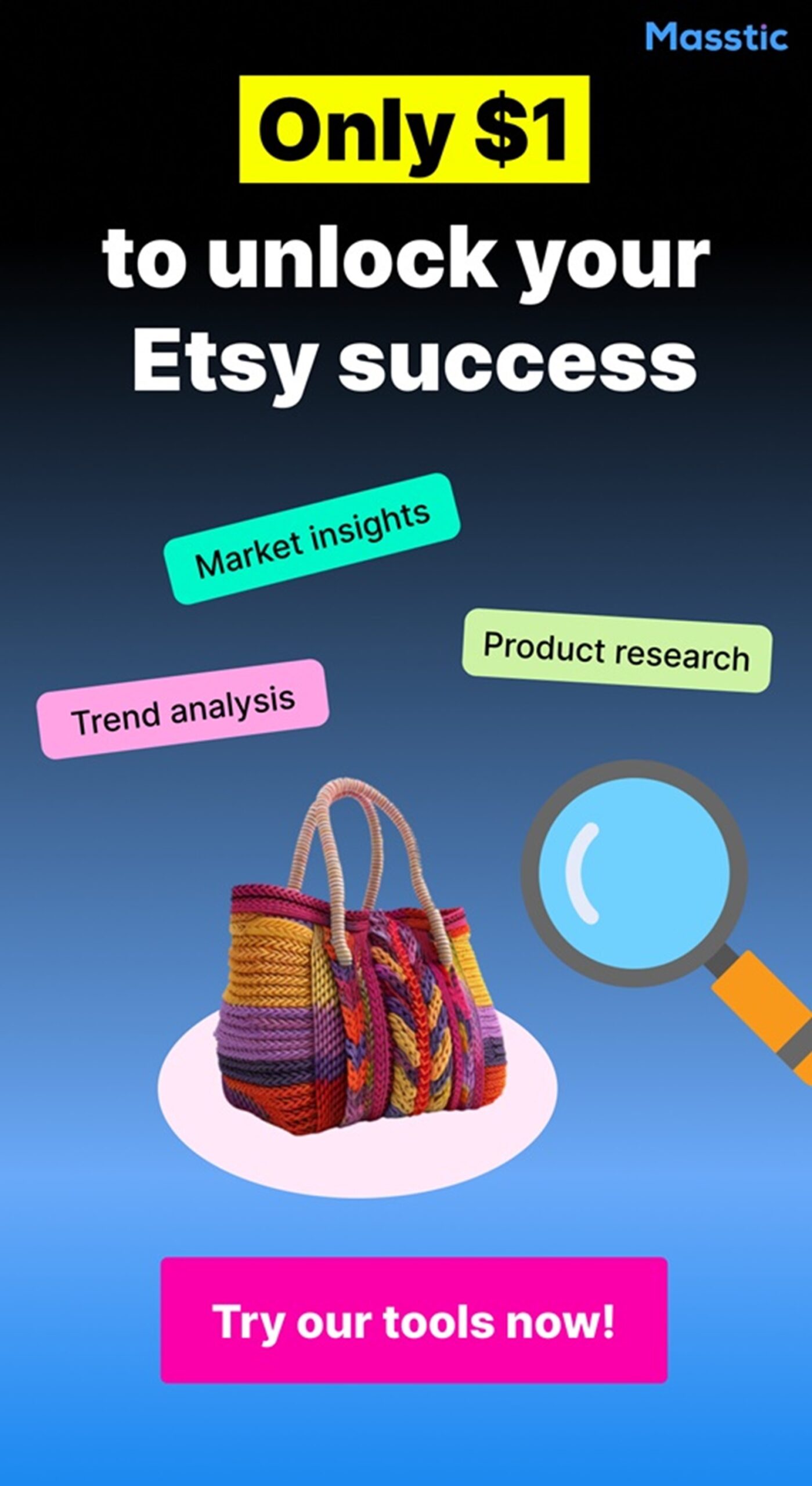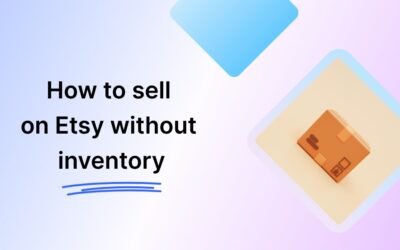How to Sell on Etsy for Beginners: 12 easy steps
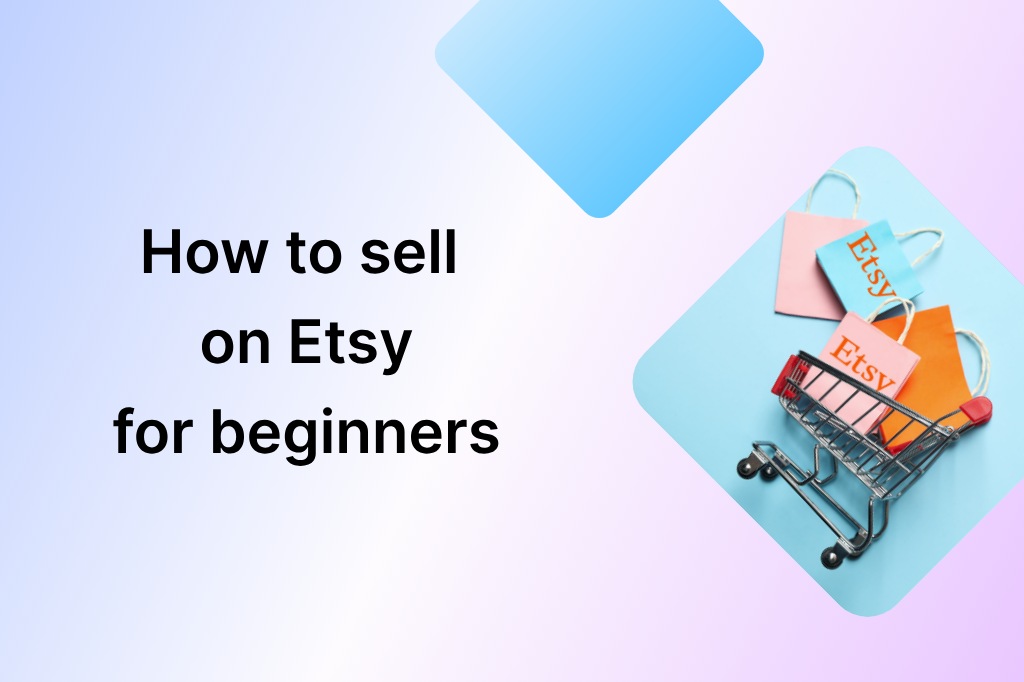
With over 90 million active buyers, Etsy proves itself an outstanding online platform made for creative sellers to showcase their unique products to the global audience. But starting to sell on Etsy can feel overwhelming for beginners.
We get it! That’s why we’ve created this blog, guiding you through the steps about how to sell on Etsy for beginners. Everything will be broken down into essential steps, simplifying the journey and making it easy to take action. No more “someday”, let’s do it “today” – turn your dream shop into a reality.
How to Sell on Etsy for Beginners: 12 simple steps
Let’s be honest, it is not a simple job opening a whole new online store. If you see the guidance online saying that 3,4,5 steps to start selling on Etsy for beginners, get ready. There are around 20 smaller, hidden sub-steps inside those 3 steps waiting for you. Opening a shop on Etsy might seem daunting, with many things in hand to handle.
However, in this blog, everything will be broken down into manageable steps (12 steps to be specific). Therefore, you’ll find that it’s easier than you think. So, grab your favorite snack, and let’s delve into the essential steps to get your Etsy shop running.
1. Create your account
This process is completely free, here’s how:
- Visit Etsy.com and click on “Sign In” in the top right corner, then select “Register.”
- On the pop-up, start typing the required information including the Email address, your First name, and Password.
- Want a faster and easier option? You can sign up using your existing email, Google, Facebook, or Apple account.
- After signing in, you will see your avatar picture (or a small gray human figure icon – if you haven’t changed the profile picture with your pretty selfie yet) next to the shopping cart on top of the page. Click on it, and a dropdown list will appear.
- Select “Sell on Etsy”, as shown in the picture below.

Once your shop is open, you will have full authority to manage your shop on the Etsy Seller app. Let’s move on!
Before you start selling, ensure you meet Etsy’s seller requirements. Any starters need to know this during the path of exploring how to sell on Etsy for beginners. Etsy does not require sellers to have a business license to start selling. However, it is recommended to follow any laws that exist for small businesses selling online.
2. Enter your Shop preferences
Once your account is created, you’ll need to set up your shop preferences. This includes your language, country, and currency.
- Shop language:
IMPORTANT: You cannot change your language setting later. Yes, that is the reason why this information is highlighted to remind you upfront. Since there is no “undo” button when everything is set, make sure that the primary language you choose is the one that you are comfortable communicating with your future customers.
In case it is too late as you’ve already set everything up, don’t worry – you still can add the translations in other languages for your Etsy store.
- Shop country: No big deal here, just simply select your country of operation.
- Shop currency: Choose the currency you want to use for your listings. If your bank’s currency is different from your shop currency, Etsy will charge you a 2.5% currency conversion fee on the sale amount. This amount will be subtracted directly from your sale before it arrives in your Payment account. So it would be best to have the same currency for both your Etsy shop currency and your bank account.
- Shop name: Have you already had an Etsy shop name? Enter it here! If not, don’t worry, you are not forced to release your creative demon at this stage yet. You can use a draft name for now and change it later once you’ve explored your favorite name from the Etsy shop name ideas list for inspiration.
3. Upload your products to Etsy
Now that your shop is set up, adding products is the next step in learning how to sell on Etsy for beginners.
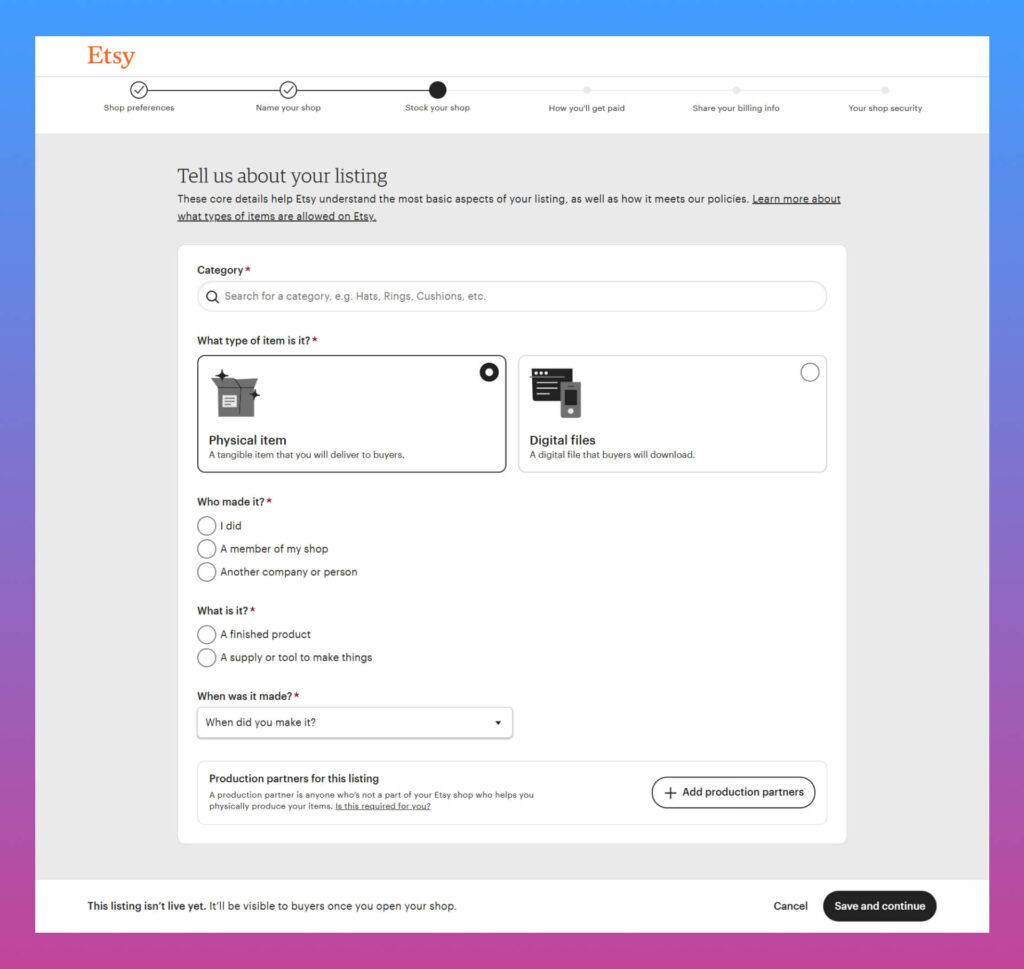
4. Deciding What to Sell on Etsy
Etsy recommends that newbie sellers should have at least 10 different product listings. With that in hand, you can increase your visibility and have a greater chance for the first sale. The question is: what to sell? Consider your passions and skills. What do you enjoy creating? What are you good at? Choosing your products is like picking out outfits for the biggest fashion show of your life. Make sure they’re unique, high-quality, and something you’re passionate about.
For you to find the answer to the question “What to Sell on Etsy” easier, let’s run through the best-selling items on Etsy, with tips on how to find yours:
14 Top selling items on Etsy in 2024:
- Apparel and accessories
- Jewelry
- Wall art
- Children’s and baby clothing
- Electronic accessories
- Office Supplies
- Home goods
- Drinkware
- Pet accessories
- Craft Supplies
- Personalized gifts
- Homemade beauty products
- Digital downloads: ebook, templates, etc.
How to find your go-to products to sell on Etsy?
- Research the market to identify trends and demand for certain products.
- Search for “Popular right now” products on Etsy.
- Using Google Trends to update on current trending subjects.
- Learn from other Etsy sellers: Choose the niche that you feel confident to compete in that has many spaces to grow, or look up to the existing successful Etsy stores.
Ensuring Your Products Meet Etsy’s Guidelines
At this stage, you might already know which kind of products you want to sell on Etsy. So, it is the perfect time for you to take a look at several Etsy documents. Don’t risk your effort and time creating tons of things, just for Etsy to reject after all due to “Policy violation”. Here is a “to-do list” for you to check about your Etsy products before going further in the selling journey:
- Read Etsy’s Creative Standard covers the rules and policy regarding which types of items are allowed on Etsy, ensuring that your products are compliant.
- Read the Prohibited Items Policy and avoid all of them, the list mentions some products such as weapons, illegal substances, and items that infringe on intellectual property rights.
5. Prepare high-quality product photos for Etsy
To make your product upload successfully on Etsy, at least one photo is required. Your product photos are your first impression, so make them count. Here are some quick tips for stunning photos:
- Lighting: Natural light is your best friend. Trying to take photos during the day near a window, or investing in a good lighting system can be another option.
- Background: Keep it simple and clean to make your product stand out.
- Angles: Shoot from multiple angles to give customers a full view
- Edit for clarity: Your photos are good but need a bit of touch-up to make it great! Use photo editing tools to enhance brightness, contrast, and sharpness.
- Show scale: Besides the high-resolution images that show 360 degrees of your product, providing them with the images for size measurement would be a good bonus. Simply put a ruler, or money next to your product for a visual demonstration of the product.
6. Write compelling Product Titles and Descriptions
Hey intern Etsy store owner, don’t be too naive to enter anything you have just thought of as the titles and descriptions of your products. They need to be found by Etsy users, only then will they know about your store and start making a purchase. So, how to write a good Etsy product description (and title)?
- Keyword-rich titles: Incorporate relevant keywords to improve search visibility. Sounds easy? Not to scare you, but there is a lot to learn before you can master this. You can refer to the Search Engine Optimization (SEO) for Shop and Listing Pages – Etsy Help for a quick grasp of how to optimize for a Search engine on Etsy.
- Avoid repeating: We need keywords, yes, but too many keywords might create counterproductive. We do not bring spammy and annoying messages to the game, we bring uniqueness and professionalism.
- Grammar and accuracy: Grammatical errors or typos create a negative impression and decrease customers’ trust.
- Detailed descriptions: Write clear and informative descriptions that highlight the features, materials, and benefits of your product.
Pro Tips: While ChatGPT can reduce the amount of work for you, do not overly depend on it. Instead, build your skeleton from scratch and reuse it in the long run.
7. Think about your Etsy pricing strategy
A pricing strategy! Of course, one of the most fundamental elements of every business. It is even more important to the stores that sell digital downloads or print-on-demand products. This part will help you with actionable steps to get a grasp of the costs along with the desired profit, and ultimately decide a good price for your products:
- Tracking systems: You might neglect the importance of tracking when standing at the starting point. But gradually, this buddy becomes more and more crucial when your store starts to grow. Many tools allow you to track expenses and income, but Excel (or Google Sheets, at your convenience) is an excellent tool for beginning to state.
- Research: The power of researching is undeniable. Do research about the market, your competitors, the delivery vendor costs, and your target audience. The more you understand, the better your strategy goes.
- Choose a pricing approach:
- The top-down pricing strategy: Use the cost of the materials, time, labor, and overhead expenses to determine a base price for your item.
- The bottom-up pricing strategy: Experiment with different pricing strategies and gather data to pinpoint the right price for your product or service. Then, budget accordingly for each step so you can reach your pricing goal.
- Calculate gross profit margins: The formula is: (Revenue – Cost of goods) / Revenue = Gross profit margin
8. Set your Etsy Tags and Categories
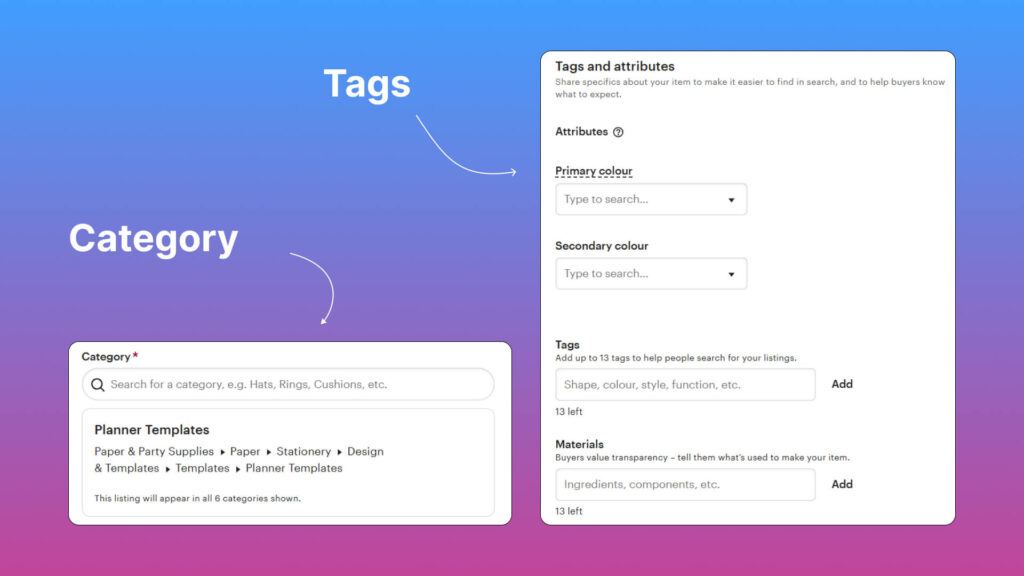
Choose the most specific category available for your item, as this helps match your listing with relevant searches, and improve its visibility in search results. Adding specific subcategories automatically includes your item in all broader categories it falls under. Avoid repeating category and attribute terms in your tags. Use all 13 tags to describe your product. Think of them as keywords that help customers find your products.
9. Set your Shipping
Shipping is an important factor to pay attention to in the journey of learning how to sell on Etsy for beginners, especially when you sell physical products. The platform offers a convenient way to calculate shipping costs automatically based on your location and shipping preferences. Another way is to update information on shipping options: if you change the carrier, add new shipping methods, or adjust some shipping details, then it is necessary to change that in settings. Regularly review your shipping costs to ensure they remain competitive and profitable for your business.
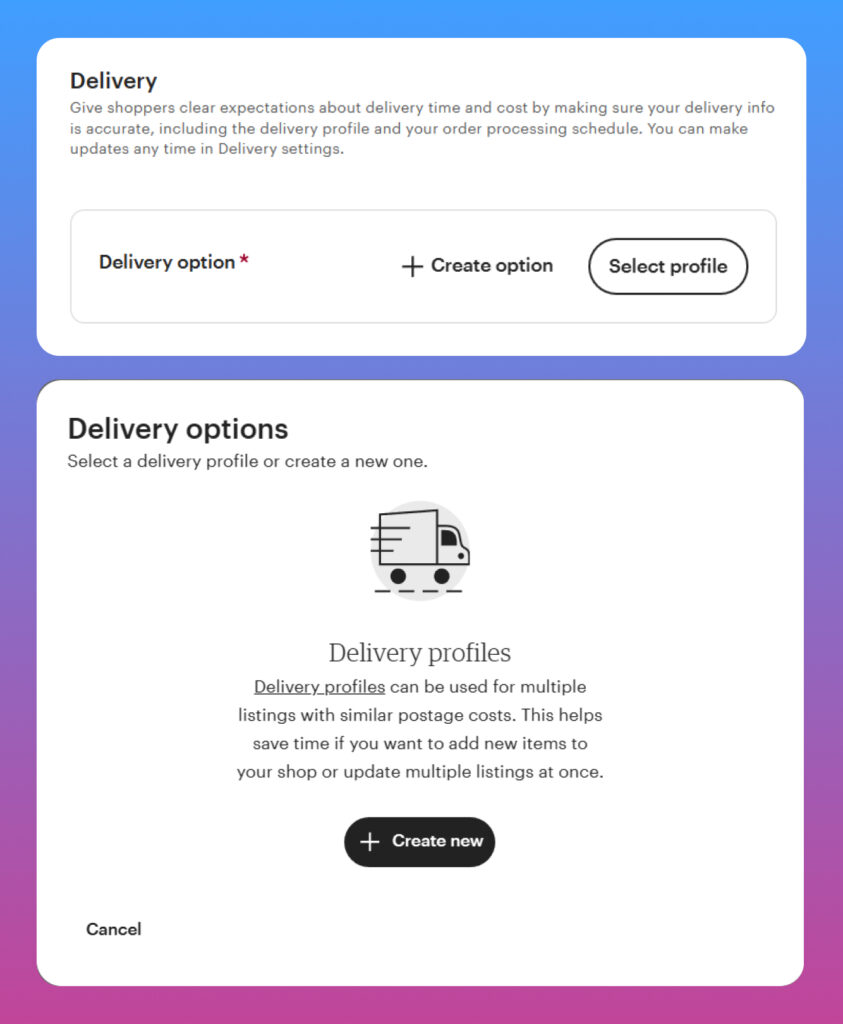
Here’s the information you need to keep in mind:
- Origin ZIP code: This informs Etsy where your shipments will be originating from.
- Processing time: The average time that you take for preparing the orders for dispatch.
- Shipping destinations: Where you are willing to sell or ship your products: Domestic only, International only, or Both.
- Shipping services: The carriers and service levels that you offer.
- Free shipping options: Whether you do free shipping within the country or across other countries too.
- Handling fee: If you wish to incorporate the handling fee in the shipping price to cater for extra charges such as the packaging material.
- Item weight and size: Especially for calculating the appropriate shipping cost when delivering large and or heavy products.
10. Decide how you’ll get paid
Payment is very important. You sell stuff for money exchange, so you must be careful on this step to prevent any potential issues. There is some information you need to understand for a throughout setup:
- Etsy payments: When you open a brand-new shop, you will immediately sign up for Esty payments. This allows your customers to choose one among various payment methods, including credit cards, PayPal, Etsy gift cards, and more.
- Set up payment account: Provide the answer to the type of seller you are: individual/ sole proprietorship or incorporated business. Link your bank account to receive payments from Etsy sales by filling in the personal information required on the How you’ll get paid page. Then, select the country where your bank is located. From this step, the setup might be different depending on your location. The best approach is to go to the Etsy guidance and find the detailed instructions for your bank location.
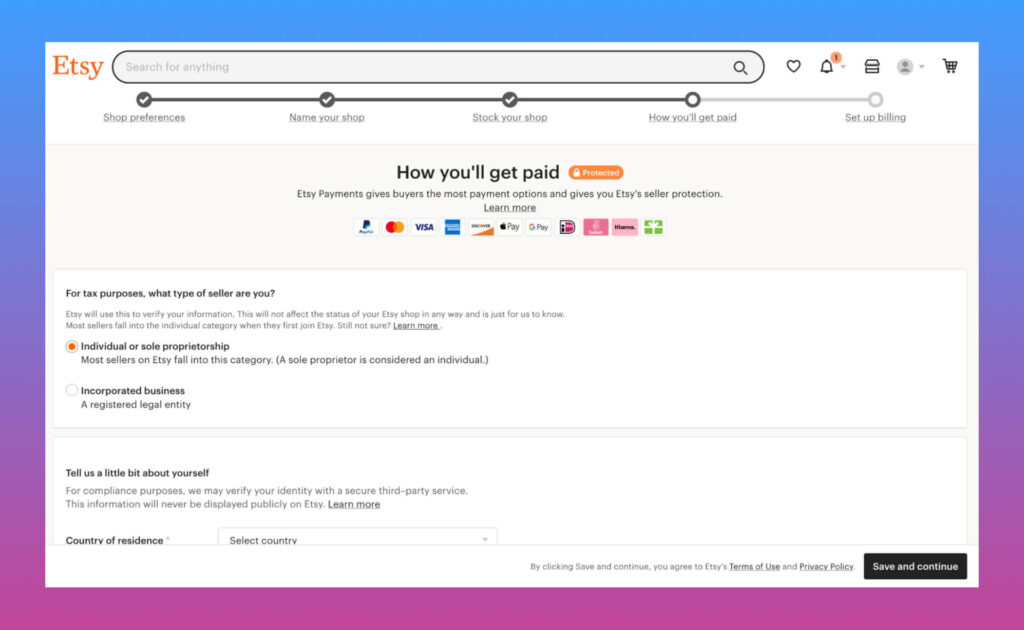
11. Set up your billing
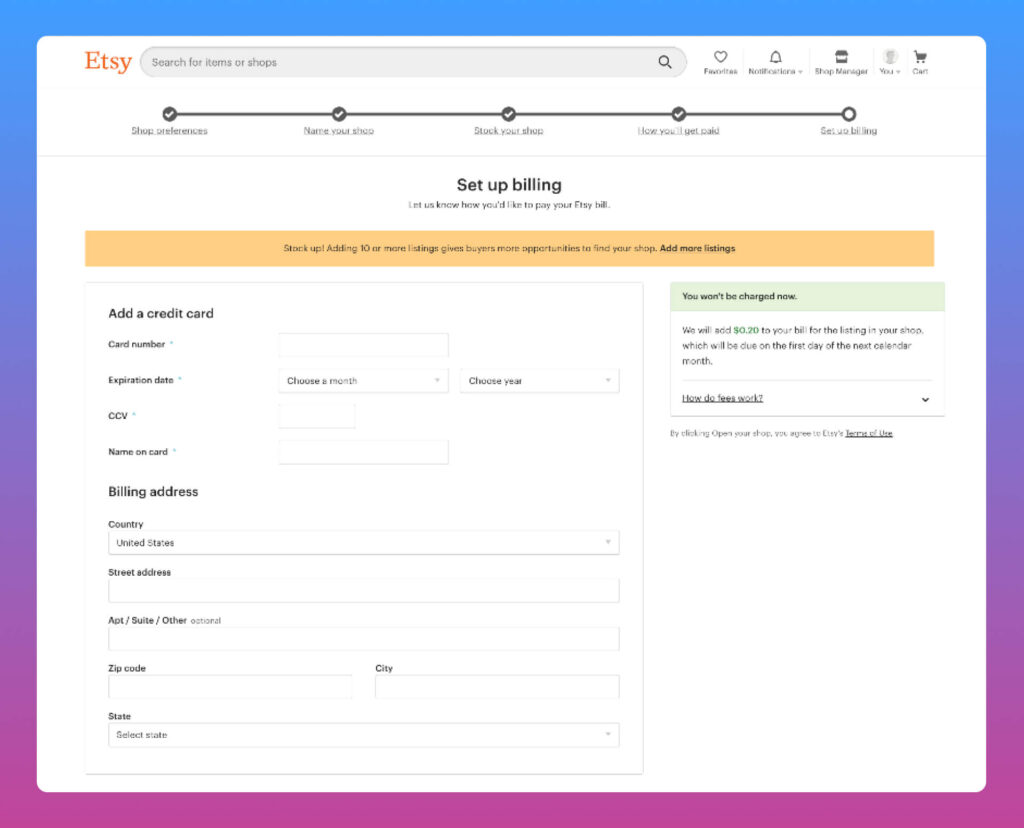
Prepare your card to add it to the Etsy account, since you need a credit card to pay for your Etsy fee. Add a credit or debit card to cover Etsy’s fees (listing fees, transaction fees, and payment processing fees). Additionally, new Etsy sellers should be aware of the costs involved. There are three main fees you will encounter as an Etsy seller:
- Listing fees:
For each individual listing, the seller is charged a flat rate of $0.20 USD, no matter if the listed product is sold or not. There are 3 more types of listing fees that store owners need to pay attention to:
- Type 1: Auto-renew sold fees: By paying this fee, you can save your time and effort of manually reposting purchased products for sale. Each time a listing is auto-renewed, you’ll be charged the standard listing fee of $0.20.
- Type 2: Multi-quantity listings: If you offer multiple variations of an item within a single listing (e.g., different sizes or colors), and a customer buys more than one variation at once, you’ll be charged the standard $0.20 listing fee for each additional item purchased beyond the first item.
- Type 3: Private listings: These are listings used for private sales, which were created specifically for a particular buyer. Private listings cost the standard $0.20 listing fee.
- Transaction fees: Some basic information Etsy beginners need to know about this fee:
- When are they charged? Etsy charges a transaction fee every time an item from your shop is sold.
- How much? The transaction fee is 6.5% of the total amount the customer pays. This includes the price of the item, any shipping costs included in the purchase price, and any gift wrapping charges included.
- Where can you see the fees? You’ll see a breakdown of the transaction fees for each sale in your Etsy Payment account.
- How is it paid? The transaction fee is automatically deducted from your earnings when a sale is made.
- Payment processing fees (if using Etsy payments): These consist of a fixed rate plus a portion of the item’s entire sale price. Each country has a different rate and percentage. The costs are deducted from the item’s total sale price, which also includes any relevant sales tax and shipping costs.
11. Click Open Shop & Update Bio
It’s an exciting moment here! Review and make sure all your settings, listings, and policies are good to go. Once everything is ready, click “Open Your Shop” to make it live.
After your shop is introduced to the world, it is the time to touch up and make the store presentation perfect. Craft a unique and engaging bio that reflects your brand’s story and resonates with your target audience. By sharing your values and mission, you’ll foster a connection with potential customers.
Additionally, establishing transparent shop policies regarding shipping, returns, and exchanges is crucial for building trust with buyers. Clearly outlining these policies ensures a smooth shopping experience and demonstrates your commitment to customer satisfaction.
12. Driving Traffic to Your Etsy Store
Getting your shop up and running is just the beginning. The next step is to drive traffic to your Etsy store. There are many different channels, each with its own strengths to make the buyers know more about your store such as Etsy SEO, social media promotion, Etsy ads, or email marketing.
How to sell on Etsy for beginners: Common Challenges & Tips to Success
Success on Etsy isn’t just about having great products. Understanding this problem, in this section, let’s together go through the common stumbling blocks and tips to overcome them. With this, you will have yourself the cheat sheet on how to sell on Etsy for beginners with outstanding results.
Common Challenges:
- Standing out in a crowded marketplace: With millions of sellers on Etsy, it can be challenging to differentiate yourself.
- Time management: Balance creating, marketing, and managing your shop.
- Pricing issues: Adjust your pricing strategy if needed to remain competitive.
- Etsy fees: Factor in Etsy’s listing fees, transaction fees, and payment processing fees when pricing your products to maintain profitability.
Tips to overcome:
- Stay organized: Keep track of inventory, orders, and finances.
- Excellent customer service: Every query and concern raised must be replied to as quickly as possible. A positive review instills a feeling of trust in the buyer.
- Continuous learning: Stay updated with Etsy’s changes and market trends.
By focusing on these tips and addressing the potential challenges, you can increase your chances of success on Etsy and build a thriving online business. Remember, patience, persistence, and a commitment to quality are key to long-term success on any e-commerce platform.
The bottom line
If you make it to the end, congratulations, you now have the basic knowledge of how to sell on Etsy for beginners. Starting an Etsy shop may seem like a long and daunting journey. However, you will never know the taste of happiness if you do not even try to get success for once. The best time to start is now. By following the 12 steps outlined in this guide, you’ll be well on your way to becoming a successful Etsy seller.
Remember, every successful business starts with a single step. Begin your journey today and turn your creative passion into a thriving online business. It’s about consistency, customer service, and continuously learning and adapting. Don’t be afraid to experiment and try new strategies. If you’re looking for additional resources or tools to help you grow your Etsy business, check out Masstic, a comprehensive platform for all Etsy sellers (no matter if you are a pro or a beginner).

